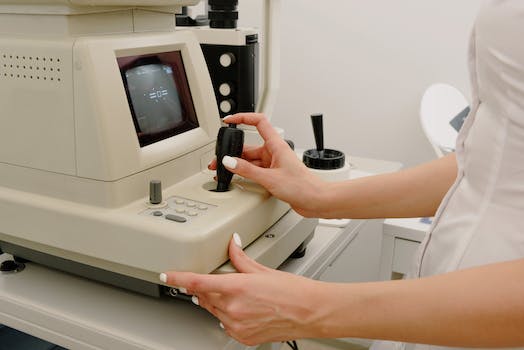How To Start A Business Meeting Speech
“Setting the tone for success: Tips for delivering a powerful business meeting speech.”
Introduction
Starting a business meeting speech can be a daunting task, especially if you are not used to public speaking. However, with proper preparation and a clear understanding of your audience, you can deliver a powerful and effective speech that sets the tone for the rest of the meeting. In this article, we will discuss some tips on how to start a business meeting speech that will engage your audience and leave a lasting impression.
Crafting a Compelling Opening Statement
Starting a business meeting speech can be a daunting task, especially if you are not used to public speaking. However, with the right preparation and mindset, you can craft a compelling opening statement that will capture your audience’s attention and set the tone for the rest of the meeting. In this article, we will discuss some tips on how to start a business meeting speech and make a great first impression.
First and foremost, it is important to know your audience. Who are you speaking to? What are their interests and concerns? What do they expect from you? Knowing your audience will help you tailor your opening statement to their needs and interests, and make them feel engaged and valued.
Once you have a clear understanding of your audience, it’s time to craft your opening statement. A good opening statement should be concise, clear, and engaging. It should grab your audience’s attention and make them want to listen to what you have to say. Here are some tips on how to craft a compelling opening statement:
1. Start with a question or a provocative statement. This will immediately grab your audience’s attention and make them curious about what you have to say. For example, you could start by asking, “Have you ever wondered why our sales have been declining?” or “Did you know that our competitors are launching a new product next month?”
2. Use a story or an anecdote. People love stories, and they are a great way to connect with your audience on an emotional level. You could start by telling a story about a customer who had a great experience with your company, or a colleague who overcame a difficult challenge.
3. State your purpose and objectives. Let your audience know why you are there and what you hope to achieve. This will help them understand the importance of your message and stay focused throughout the meeting.
4. Use humor. A well-placed joke or a witty remark can help break the ice and make your audience feel more relaxed and receptive to your message. Just make sure your humor is appropriate and relevant to the topic at hand.
5. Use visual aids. If you have a PowerPoint presentation or other visual aids, use them to your advantage. A compelling image or a graph can help illustrate your point and make your opening statement more memorable.
Once you have crafted your opening statement, it’s important to practice it several times before the meeting. This will help you feel more confident and comfortable when delivering it, and ensure that you don’t stumble over your words or forget important points.
In conclusion, starting a business meeting speech can be challenging, but with the right preparation and mindset, you can craft a compelling opening statement that will capture your audience’s attention and set the tone for the rest of the meeting. Remember to know your audience, use a question or a provocative statement, tell a story or an anecdote, state your purpose and objectives, use humor, and use visual aids. With these tips, you’ll be well on your way to delivering a successful business meeting speech.
Setting Clear Objectives and Goals

Starting a business meeting speech can be a daunting task, especially if you are not used to public speaking. However, with the right preparation and mindset, you can deliver a powerful and effective speech that will set the tone for the rest of the meeting. In this article, we will discuss how to set clear objectives and goals for your business meeting speech.
The first step in setting clear objectives and goals for your business meeting speech is to understand the purpose of the meeting. What is the main goal of the meeting? Is it to discuss a new project, review financial reports, or brainstorm new ideas? Once you have a clear understanding of the purpose of the meeting, you can start to think about what you want to achieve with your speech.
The next step is to identify your audience. Who will be attending the meeting? Are they executives, managers, or employees? What is their level of knowledge and expertise in the subject matter? Understanding your audience will help you tailor your speech to their needs and interests.
Once you have a clear understanding of the purpose of the meeting and your audience, you can start to set your objectives and goals for your speech. Your objectives should be specific, measurable, achievable, relevant, and time-bound. For example, your objective might be to:
– Introduce a new project and explain its benefits to the company
– Review financial reports and highlight areas of improvement
– Brainstorm new ideas for a marketing campaign
Your goals should be aligned with your objectives and should be focused on what you want to achieve with your speech. For example, your goals might be to:
– Engage the audience and get them excited about the new project
– Provide clear and concise information about the financial reports
– Encourage the audience to participate in the brainstorming session
To achieve your objectives and goals, you need to prepare your speech carefully. Start by outlining the main points you want to cover and organizing them in a logical and coherent manner. Use examples, anecdotes, and statistics to support your points and make them more memorable.
When writing your speech, keep in mind the tone and style you want to use. Do you want to be formal or informal? Do you want to use humor or be more serious? The tone and style of your speech should be appropriate for your audience and the purpose of the meeting.
Finally, practice your speech several times before the meeting. This will help you feel more confident and comfortable when delivering your speech. Practice in front of a mirror or with a friend or colleague who can give you feedback on your delivery and body language.
In conclusion, setting clear objectives and goals for your business meeting speech is essential to delivering a powerful and effective speech. By understanding the purpose of the meeting, identifying your audience, and setting specific objectives and goals, you can prepare a speech that engages and inspires your audience. Remember to prepare carefully, use examples and statistics to support your points, and practice your speech several times before the meeting. With these tips, you can start your business meeting speech with confidence and achieve your objectives and goals.
Engaging Your Audience with Storytelling Techniques
Starting a business meeting speech can be a daunting task, especially if you want to engage your audience and make a lasting impression. One of the most effective ways to do this is by using storytelling techniques. Storytelling is a powerful tool that can help you connect with your audience on a deeper level and make your message more memorable. In this article, we will explore some tips on how to start a business meeting speech using storytelling techniques.
The first step in using storytelling techniques is to know your audience. You need to understand who they are, what they care about, and what their needs are. This will help you tailor your story to their interests and make it more relevant to them. For example, if you are speaking to a group of investors, you may want to focus on the financial aspects of your business and how it can benefit them.
Once you have a good understanding of your audience, you can start crafting your story. A good story should have a clear beginning, middle, and end. It should also have a central theme or message that ties everything together. Your story should be engaging and memorable, and it should leave your audience with a sense of inspiration or motivation.
One effective way to start your story is by using a hook. A hook is a statement or question that grabs your audience’s attention and makes them want to hear more. For example, you could start your speech by saying, “Have you ever had a dream that seemed impossible to achieve? Well, that’s exactly how I felt when I started my business.”
Another way to engage your audience is by using humor. Humor can help break the ice and make your audience feel more relaxed and receptive to your message. However, it’s important to use humor appropriately and not to offend anyone. You could start your speech by telling a funny anecdote or joke that relates to your business.
Once you have your audience’s attention, you can start telling your story. Your story should be authentic and personal, and it should show your audience why you are passionate about your business. You could talk about the challenges you faced when starting your business, the lessons you learned along the way, and the successes you have achieved.
It’s also important to use descriptive language and vivid imagery to bring your story to life. This will help your audience visualize your message and make it more memorable. For example, instead of saying, “I started my business in a small office,” you could say, “I started my business in a cramped, dingy office with peeling wallpaper and flickering fluorescent lights.”
Finally, you should end your story with a strong conclusion that ties everything together. Your conclusion should summarize your message and leave your audience with a sense of inspiration or motivation. You could end your speech by saying, “Despite the challenges I faced, I never gave up on my dream. And today, I am proud to say that my business is thriving and making a difference in the world.”
In conclusion, starting a business meeting speech can be a daunting task, but using storytelling techniques can help you engage your audience and make a lasting impression. By knowing your audience, crafting a compelling story, using hooks and humor, and ending with a strong conclusion, you can deliver a speech that inspires and motivates your listeners. So the next time you have to give a business meeting speech, remember to tell a story that connects with your audience and leaves them wanting more.
Using Visual Aids Effectively
Starting a business meeting speech can be a daunting task, especially if you are not used to public speaking. However, with the right preparation and mindset, you can deliver a powerful and effective speech that will engage your audience and leave a lasting impression. One of the most effective ways to do this is by using visual aids. In this article, we will discuss how to use visual aids effectively in your business meeting speech.
Firstly, it is important to choose the right visual aids for your speech. There are many different types of visual aids available, such as slides, charts, graphs, videos, and images. The key is to choose the ones that will best support your message and help you to communicate your ideas clearly and effectively. For example, if you are presenting data or statistics, a chart or graph may be the most appropriate visual aid. If you are trying to convey a complex idea, a video or image may be more effective.
Once you have chosen your visual aids, it is important to prepare them properly. This means ensuring that they are clear, concise, and easy to understand. Avoid cluttering your slides or charts with too much information, as this can be overwhelming for your audience. Instead, focus on the key points that you want to convey and use visuals to support these points.
When using visual aids in your business meeting speech, it is also important to use them strategically. This means using them at the right time and in the right way to enhance your message. For example, you may want to use a chart or graph to introduce a new concept or idea, or to illustrate a point that you are making. Alternatively, you may want to use an image or video to create an emotional connection with your audience or to help them visualize a particular scenario or situation.
Another important aspect of using visual aids effectively is to ensure that they are visible and easy to see. This means using large fonts and clear images, and ensuring that your slides or charts are not too small or crowded. It is also important to test your visual aids before your speech to ensure that they are working properly and that they can be seen from all parts of the room.
Finally, it is important to remember that visual aids are just one part of your business meeting speech. While they can be a powerful tool for communicating your ideas and engaging your audience, they should not be relied on too heavily. It is still important to focus on your delivery, your tone of voice, and your body language, as these are all important aspects of effective communication.
In conclusion, using visual aids effectively can be a powerful way to enhance your business meeting speech and engage your audience. By choosing the right visual aids, preparing them properly, using them strategically, and ensuring that they are visible and easy to see, you can deliver a powerful and effective speech that will leave a lasting impression on your audience. Remember to focus on your delivery and your body language as well, as these are all important aspects of effective communication. With the right preparation and mindset, you can deliver a speech that will inspire and motivate your audience, and help you to achieve your business goals.
Closing Strong: Call to Action and Next Steps
Starting a business meeting speech can be a daunting task, especially if you are not used to public speaking. However, with the right preparation and mindset, you can deliver a powerful and effective speech that will leave a lasting impression on your audience. In this article, we will discuss some tips on how to start a business meeting speech and close it with a strong call to action and next steps.
Firstly, it is important to know your audience. Before you start your speech, take some time to research your audience and understand their needs, interests, and expectations. This will help you tailor your speech to their specific needs and make it more engaging and relevant. You can also use this information to choose the right tone and language for your speech.
Once you have a good understanding of your audience, it is time to prepare your speech. Start by outlining the main points you want to cover and organizing them in a logical and coherent way. Make sure to include a clear introduction, body, and conclusion, and use examples and anecdotes to illustrate your points. Practice your speech several times to ensure that you are comfortable with the content and delivery.
When it comes to starting your speech, there are several techniques you can use to grab your audience’s attention and make a strong first impression. One effective technique is to start with a provocative question or statement that challenges your audience’s assumptions or beliefs. This will immediately engage their curiosity and make them more receptive to your message.
Another technique is to use a personal story or anecdote that relates to your topic and highlights your expertise or experience. This will help you establish credibility and build rapport with your audience. You can also use humor or a surprising fact to break the ice and create a relaxed and friendly atmosphere.
As you move into the body of your speech, make sure to stay focused on your main points and avoid getting sidetracked. Use clear and concise language, and avoid jargon or technical terms that may confuse your audience. Use visual aids such as slides or handouts to illustrate your points and make them more memorable.
When it comes to closing your speech, it is important to end on a strong note that leaves a lasting impression on your audience. One effective way to do this is to use a call to action that encourages your audience to take a specific action or make a commitment. This could be anything from signing up for a newsletter to making a donation to your cause.
Another effective technique is to provide next steps or follow-up actions that your audience can take after the meeting. This could include providing contact information or resources, scheduling a follow-up meeting, or inviting them to a related event or webinar. By providing clear and actionable next steps, you can help ensure that your message resonates with your audience and leads to tangible results.
In conclusion, starting a business meeting speech can be a challenging but rewarding experience. By knowing your audience, preparing your speech, and using effective techniques to engage and persuade your audience, you can deliver a powerful and effective speech that leaves a lasting impression. Remember to close your speech with a strong call to action and next steps, and follow up with your audience to ensure that your message has been received and acted upon. With these tips and techniques, you can become a confident and effective business speaker who inspires and motivates your audience to take action.
Conclusion
Conclusion: Starting a business meeting speech requires careful planning and preparation. It is important to establish a clear purpose, outline key points, and engage the audience from the beginning. By following these tips, you can deliver a successful and effective business meeting speech that sets the tone for a productive meeting.






